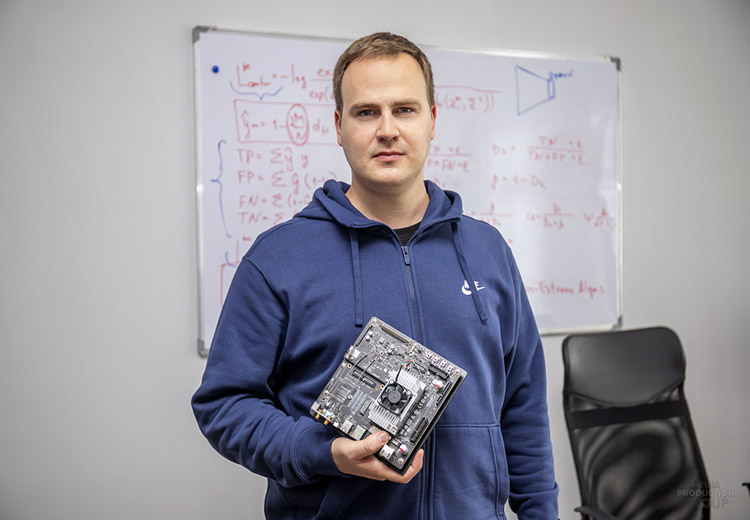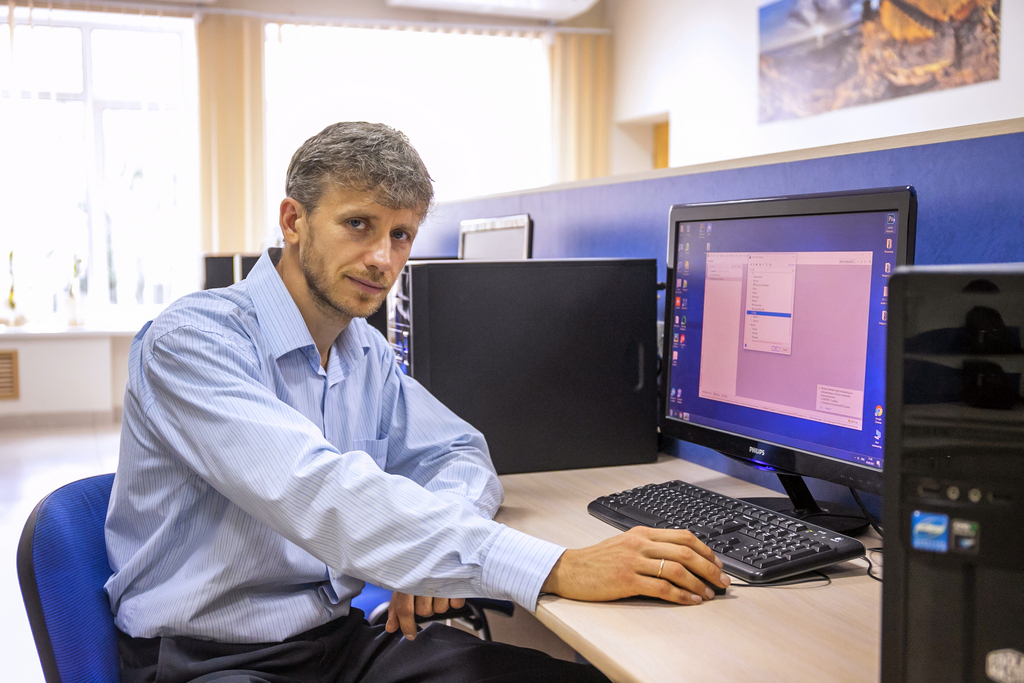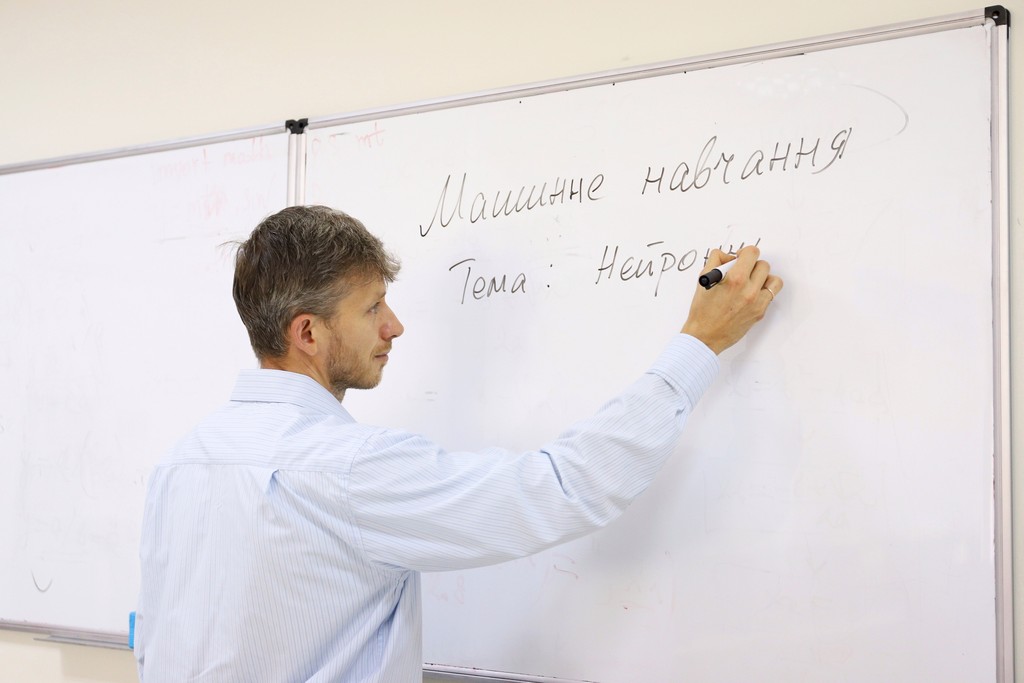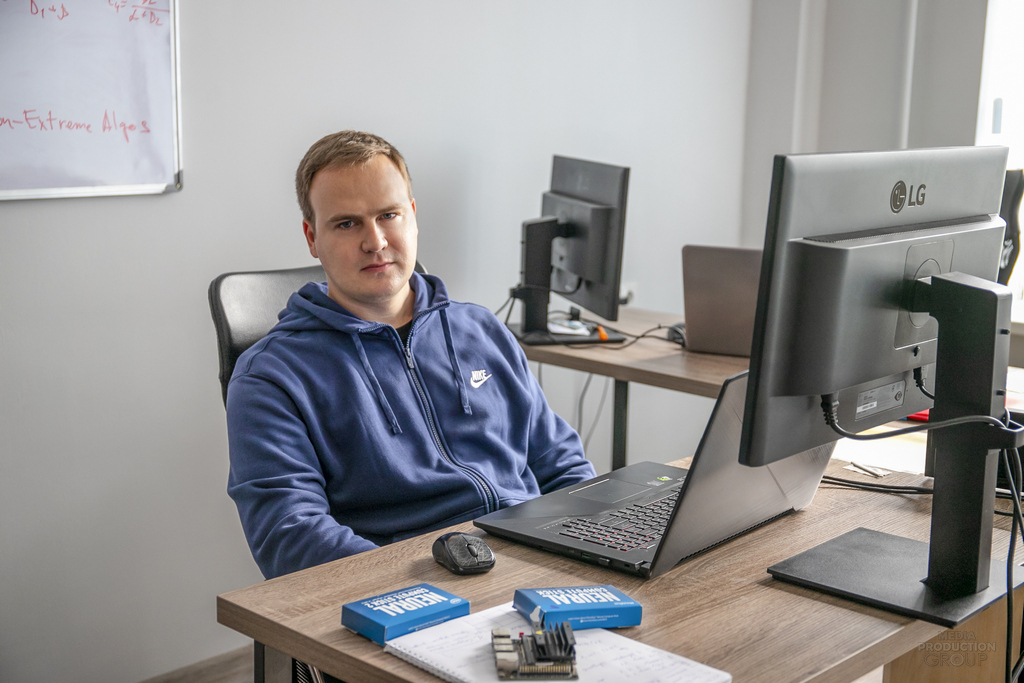Sumy State University’s Achievements in AI and Neural Network Research

Today, AI technologies are used in different spheres of human life: from households to world-leading companies. Such enterprises as Apple, Microsoft, Google, etc., develop neural networks. SumDU departments and sections perform research based on mathematical knowledge, which provides their own AI inventions.
The Sumy State University’s Department of Computer Science has been researching AI for a long time. However, its first product commercialization took place in 2015 due to Viacheslav Moskalenko. The world euphoria in AI research characterized this period. Thus, the university had already acquired methodological and practical experience in deep learning, obstacle avoidance, and navigation systems at the initial process stage. Sumy State University’s experts had developed their framework whose partial functions were integrated into the open TensorFlow Library. The Department of Applied Mathematics and Complex System Modeling has been interested in neural network design as well. New technology launches also belong to the Research and Development Institute of Energy Efficient Technologies (within the Faculty of Technical Systems and Energy Efficient Technologies) and the Section of Computer-Assisted Command Systems.
Now, Sumy State University’s scientists are working over several AI directions. In particular, our staff has been training neural networks to recognize visual images of explosive devices (e.g. mines). An armoured vehicle and tank recognition has been performed as well. The essence is the creation of combat modules that are installed on vehicles to track a target.
This task provides a basis for the Decision-Making System. It gives a quick hint for the vehicle operator to act against his target.
Similar products are already available and applied worldwide. SumDU has succeeded in speeding up the device reaction by ten times, which is extremely important at war. The system can also select images – among many of them, each type is recognized.
The researchers of this system avoided some typical errors. For example, if the device detects an unknown object, it is interpreted as unrecognizable rather than searching for similar variants in its memory.
Another development direction is a neural network-based navigation system. This is made as an analogue to human brain functioning.
Drones work according to preset routes, coordinates and area maps. The latest drones can return to their starting point. Our university tried to make them fly without maps. The camera performs analysis, speed decreases, but the drone flies further and explores the territory. Such a flight variant is reasonable above hills to move between ravines or valleys properly.
The drone plots its route via camera images and performs preset tasks. Simultaneously, the area is being recorded, which can be used later. Finally, the drone returns to the same plotted route.
In general, this navigation system works like a human brain: the drone detects and memorizes an object image with a subsequent visual orientation regarding it. Moreover, the device can assess obstacles and how to avoid them.

One more direction of neural network development is connected with the previous one. The improved navigation system can define the recognized object type.
That may be applied within air search activities in case of sea disasters. For example, if there is a sunken ship, helicopters are launched from the coast to search for the crew survivors. Additionally, one or two drones arrive at the crash site. A survivor will hold the ship debris or swim to the coast. On the water surface, many things remain bags, boards, fabrics. Among all of them, the drone has to recognize humans.
Sumy State University’s scientists have already performed a selection mission. It means that a human is selected among other visually similar objects on the water surface. Such a product may be demanded in future.
Another direction is connected with green energy, namely with solar power stations. Installing solar generators, the owner must be confident in their profitability. It is essential to know how much electricity can be generated by the station per day and how much energy the population needs for the proper functioning of all local systems.

If we include solar generator features and weather forecasts, electricity production can be predicted for the next several days. Although it is often made, this predicting method has drawbacks (for example, inaccuracy of analysis). Most forecasts do not match with actual electricity generation. That highly depends on weather conditions, technical failure or the human factor.
Therefore, SumDU experts have developed an AI system that can define the generated electricity quantity (irrespective of individual features of solar power stations).
Besides, most stations produce different electricity amounts, and some incur energy losses. If superpowerful stations (e.g. those of space satellites) are involved in electricity generation, green energy will be costly and unreasonable in use.
For cheap solar stations, a neural network has been created. Firstly, it includes most generation parameters. Secondly, it “re-improves” via total generation history, which assists in predicting electricity production accurately. One may even provide an hour-by-hour generation (depending on the sun position and weather).
Within this research, we benefit as much as possible from co-operation with owners of some Ukrainian solar stations. They allow testing our system in the natural environment to predict electricity generation and compare calculations with actual results.
If our neural network forecasts a high generation level in contrast to its low current amount, station operators can faster find and solve the problem to recover electricity production.
Another direction is connected with electricity as well. Apart from power generation, SumDU scientists research its consumption.
Electricity accumulation is very unprofitable. Energy must be consumed immediately after generation. Power stations should work equally: fluctuations lead to overload and fuel burn increase. That is why generation and consumption must be performed on the same level. Therefore, there is “a hot reserve”, which is usually observed at thermal power stations to produce extra energy. Boiler houses should be engaged in advance to provide enough electricity in case of sharp consumption needs for their proper use.
Thus, a forecast is required regarding how much power is necessary for hourly consumption per a next day or week. If an approximate prediction is available, the owner can keep a less power station reserve, which reduces environmental damage.

Our researchers have developed a neural network that predicts energy consumption for each following day. Indeed, there are possible accuracy errors, but 3 to 5 % in such a case is a permissible limit. Due to our product, power station owners can better understand consumption principles and manage additional energy resources properly. Currently, the system is being tested. It may be applied within a broad scale: from the whole country to a single enterprise.
For Sumy State University’s units, non-invasive counters (with no power supply intrusion) are being designed in our laboratories. This may rearrange and improve the total university electricity consumption. Such an energy counting rule is being introduced into Sumy State University, which will be further brought to a broader scale.
The sound and image recognition direction assists in detecting tiny details in photo and video records. For example, car license plates can be recognized in camera pictures. Tones of a specific musical instrument can be identified in a sound file while using some applications.
Classification is connected with databases. This research direction promotes a quick search for all required information about an object (when its data are located in unique lists).
Clusterization is singling out mini-groups within a great mass of similar objects. In SumDU, these technologies are used to arrange students’ groups and to simplify schedule creation.
Sumy State University’s scientists make neural networks recognize and predict the object location in certain numerical series to forecast correctly. It belongs to currency exchange rates or stock prices. AI products may decrease the human factor influence and enhance the prediction process.
The Sumy State University’s approach can also improve any neural networks via the advanced multi-stage training methodology. Due to the loss function change on different training stages in the neural network of basic technology and thanks to Error-Correcting Output Codes, high resistance to adversarial attacks and image distortion is achieved.

Within general hyperparameterization in machine training, Sumy State University’s experts have suggested the algorithm of scaling data capacity by adding extra neurons in case of need. The algorithm modification made its commercialization possible.
Resistance to adversarial attacks is one of the main neural network parameters, mainly demanded in image recognition systems. The Error-Correcting Output Codes approach has improved the data and experimental intelligence technology by Professor Anatoliy S. Dovbysh, head of the Department of Computer Sciences (the Faculty of Electronics and Informational Technologies of Sumy State University). Thus, the data and experimental intelligence technology have perfectly matched deep learning and Error-Correcting Output Codes. That resulted in increasing recognition accuracy and work with unbalanced data and a decreasing amount of possible failures.
Within neural network development, SumDU co-operates with the Institute of Information and Computational Technologies (Kazakhstan) and the Panevezys University of Applied Sciences (Lithuania). The former has been working with our university for four years. The latter is starting its joint projects with SumDU.
Neural network development is one of the promising directions, which requires deep knowledge and experience. SumDU is interested in benefiting from its students and lecturers’ research on the city, country, and world levels.
Find out more about SumDU.